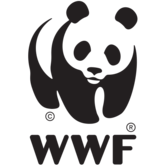Water Circles
Smart water cycles keep wastewater away from the reef
Picture this: a green garden where there used to be dust. No sewage smell on the breeze. Underwater, coral can “breathe” again.
On Bonaire, untreated wastewater often seeps into the ground or flows toward the sea. In areas without sewers, the impact grows: nutrients feed algae, coral gets stressed, and the reef fades. That is why the Public Entity of Bonaire, WWF-NL, STINAPA, WEB, and Water Alliance are working together with one goal: treat water locally and put it back to work.
The Water Circles solution
Five sites, five small systems, each tailored to its location. These decentralized units clean wastewater close to where it’s produced. The approach is smart, sustainable, and built to scale. Instead of flushing value away, Water Circles keeps water in the loop for practical uses like irrigation, toilet flushing, and greening the kunuku.
How it works on Bonaire
Each system is monitored for performance, costs, and day‑to‑day usability for residents and businesses. Community involvement is part of the design. Alongside clear public information, vocational students receive hands-on training in water management so the island grows local skill and capacity. “Water you reuse never reaches the ocean,” says Meike Breedveld, Water Project Lead NEPP. “That protects the reef and makes the island stronger.”
What you’ll notice
Water Circles is a real-world step toward ending wastewater discharges into the Bonaire National Marine Park by 2030. The pilots prove local treatment works, build practical know-how, and open the door to scale-up. Expect cleaner coastal waters, smarter water use, and a community that values every drop.

